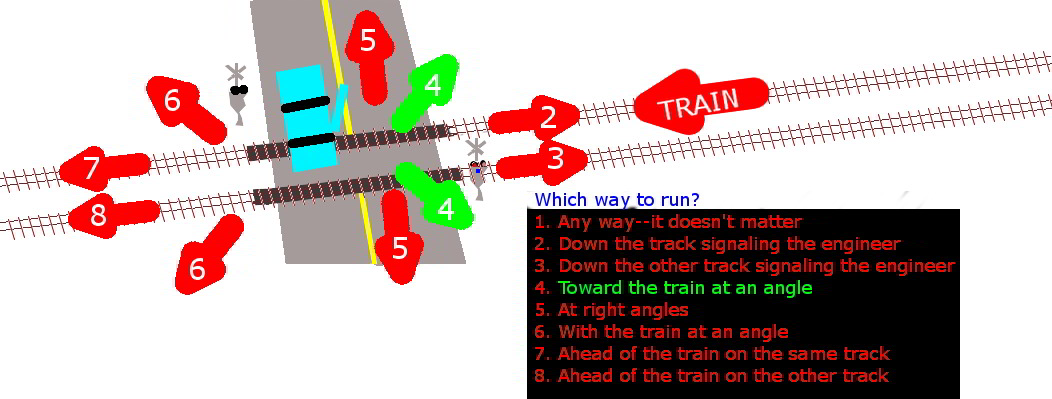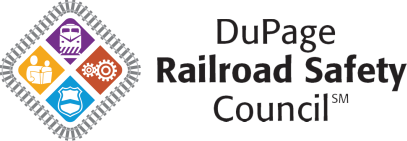If your car is on the tracks, and the highway-railroad signals activate or you see a train’s headlight, RRRUUUNN!
But in which of the directions above would you run? Why?
The answer is 4.

Here are the reasons keyed to the directions numbered above:
- People who have left their car before a train hits their automobile have been seriously injured or killed—not by the train but by parts of their own automobile. Running in the proper direction can save their life.
- Do not run down the tracks trying to signal the engineer to stop the train. Fast and heavy trains can take more than a mile to stop. After the signals activate, the train can arrive at the crossing in as soon as 20 seconds. (49 CFR 234.225 (https://ecfr.io/Title-49/se49.4.234_1225 )). Unless you can do a 20-second mile, you cannot stop the train before it hits your vehicle. You are more likely to trip over the ballast (rocks), rails, or crossties (wood or concrete) and be run over by the train.
- You cannot stop the train in time. You are more likely to trip and be run over by a second train operating in the same or opposite direction. Remember, you don’t know how many trains at a multi-track crossing are controlling the signals.
- This is the proper answer. Stay clear of the trains but be “upstream” when the train hits your vehicle.
5.-8. When the train hits your automobile, it will “explode” into pieces of metal which will be carried “downstream” with the train. Some will even fly in direction 5. that would otherwise seem to be the intuitive answer.

